The Electronic Intifada 4 September 2016

Palestinian girls mark the second anniversary of the 51-day Israeli summer onslaught on the Gaza Strip at the Gaza City seaport on 3 August.
APA imagesDuring the month of August, Iyad Hamad, a 38-year-old father, became the 220th Palestinian to be killed since a new phase of deadly violence began at the outset of October last year.
Hamad was shot dead by soldiers near a military pillbox outside the occupied West Bank village of Silwad, near Ramallah, on 26 August. The Israeli army admitted that Hamad was unarmed and posed no threat when he was slain.
Two days earlier, soldiers shot and killed 24-year-old Sari Abu Ghurab on a highway in the northern West Bank. The soldiers claimed that they had pursued a car from which rocks were being thrown at passing vehicles, hitting the windshield of a military jeep. The army said that when soldiers stopped the car, Abu Ghurab exited the vehicle and attempted to stab a soldier in the neck and was shot dead.
Photos from the scene, however, show Abu Ghurab’s body still seated in the car which he was driving, contradicting the army’s narrative that he had exited the vehicle before he was killed.
Another youth, 19-year-old Muhammad Abu Hashhash, was shot and fatally wounded during a massive raid on al-Fawwar refugee camp near the West Bank city of Hebron on 16 August. Fifty-two Palestinians were injured during the raid, more than half by live ammunition.
So far this year, 79 Palestinians have been killed by Israelis, according to the United Nations monitoring group OCHA. Ten Israelis have been killed by Palestinians during that same time.
Three persons wanted by the Palestinian Authority security services were killed in the northern West Bank city of Nablus during August. One of them, 50-year-old Ahmad Izzat Halawa, was beaten to death while in custody. The Palestinian Center for Human Rights described the incident as an “unlawful” act of “revenge” for the killing of two Palestinian security officers days prior.
Intensification of demolitions
Israeli forces intensified the destruction of Palestinian property and infrastructure in the West Bank during the month.
Four homes belonging to the families of Palestinians accused of attacking Israelis were destroyed during the month.
OCHA reported that as of 8 August, “Since the beginning of 2016 the Israeli authorities have demolished or sealed on punitive grounds 21 homes, displacing a total of 116 people, nearly the same as in the entire 2015.”
Dozens of Palestinian-owned structures were destroyed during the month under the pretext that they lacked building permits, which the Israeli occupation authorities rarely grant to Palestinians living in the 60 percent of the West Bank under full military control. Several of the structures had been provided as humanitarian assistance by international donors.
As of 8 August, Israel had destroyed or confiscated 200 humanitarian assistance items, almost double the figure for all of 2015, OCHA stated. The agency warned that such demolitions increase the “risk of forcible transfer, enhancing the coercive environment pushing the residents to leave.”
Israeli authorities also cut off a water pipeline used by 41 families in four Bedouin communities in the Jerusalem area, and two other communities received demolition and stop-work orders against homes, livelihood-related structures and a kindergarten, according to OCHA.
Israeli settlers killed nearly a dozen sheep belonging to a Palestinian Bedouin community near the West Bank city of Ramallah while a female herder was grazing the herd near the Rimonim settlement, and a 10-year-old Palestinian boy with disabilities was physically assaulted and injured by settlers in Hebron.
Most intensive Gaza strikes since 2014
Israel carried out dozens of airstrikes and fired tank shells across the Gaza Strip on 21 August, resulting in the injury of four Palestinians, including two civilians, one of them a child, according to OCHA.
“The attacks, which were the most intensive since the 26 August 2014 ceasefire, followed the firing of one projectile into southern Israel by a Palestinian armed group, which resulted in no injuries or damage,” OCHA stated.
Israeli forces fired on Palestinians in Gaza throughout the month, injuring a 17-year-old boy during a protest near the boundary with Israel, and disrupting the work of farmers and fishermen.
Rafah crossing, the sole point of exit and entry for Gaza’s nearly 1.9 million residents, was exceptionally opened for three days starting 30 August to allow approximately 2,000 Palestinians to travel to Mecca for the annual hajj pilgrimage.
“Since the beginning of 2016, the crossing has been partially opened for only 14 days,” OCHA reported. “Over 27,000 people are registered and waiting to cross, according to the Palestinian authorities in Gaza.”
Twelve Palestinians died as a result of the violence in Syria during August, according to the Action Group for Palestinians of Syria. Four of the slain were fighters, while three were killed during airstrikes and bombing, and two died in Syrian government prison. Two others were civilians who died by gunfire.
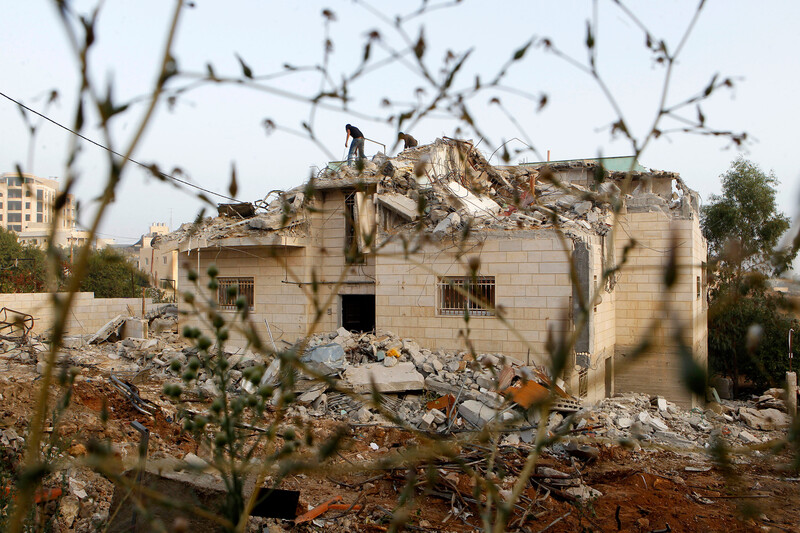
Palestinians inspect the damage after Israeli troops demolished the family home of Khalid Makhamreh in the West Bank village of Yatta, near Hebron, on 4 August. Makhamreh and his cousin, Muhammad Makhamreh, whose home was also destroyed, carried out a shooting attack in Tel Aviv, killing four Israelis, in June. Thirteen persons, including six children, were displaced by the demolitions. One of the homes was destroyed with explosives, damaging two apartments in the same building and affecting their 20 residents, the UN monitoring group OCHA reported.
APA images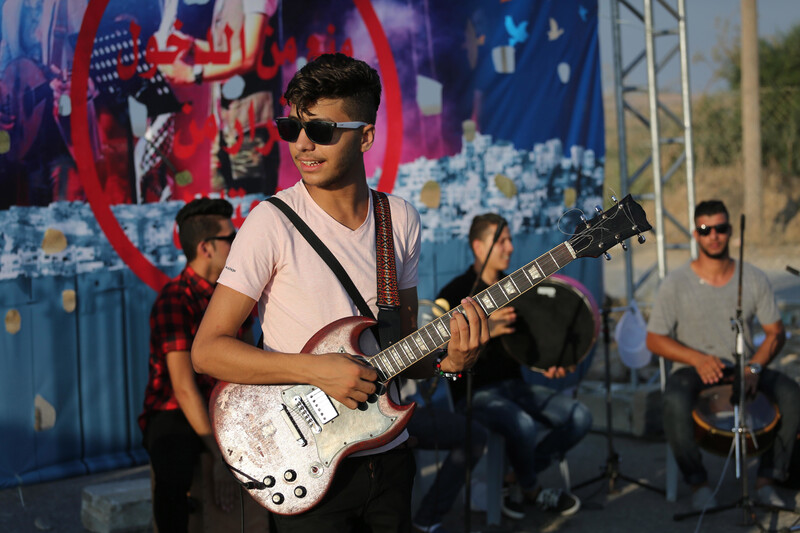
The band Dawaween, denied permission to travel from Gaza to Jerusalem where they were scheduled to perform, give a concert as part of a protest in Beit Hanoun, near the Erez checkpoint with Israel, northern Gaza Strip, 6 August.
APA images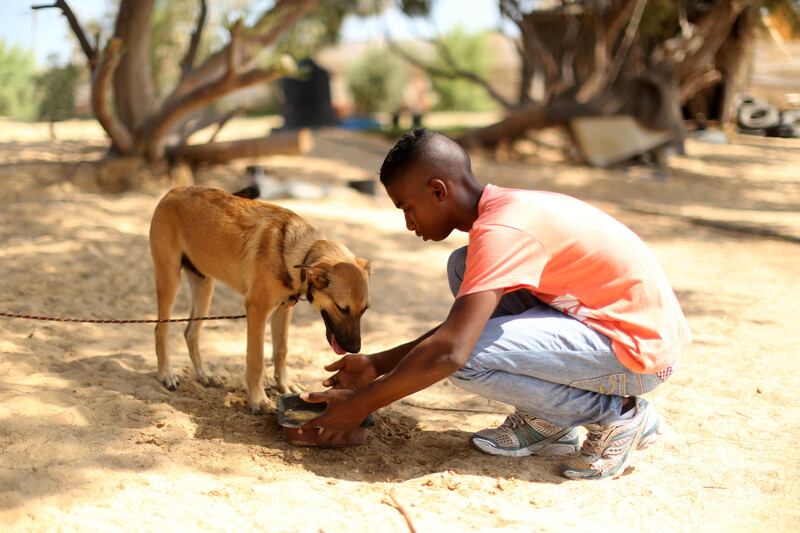
Saed, 16, cares for a dog at the Sulala Society for Training and Caring for Animals, in Zahra, south of Gaza City, on 7 August. Founded by the teenager’s father, stray dogs are taken in and domesticated for adoption at Sulala.
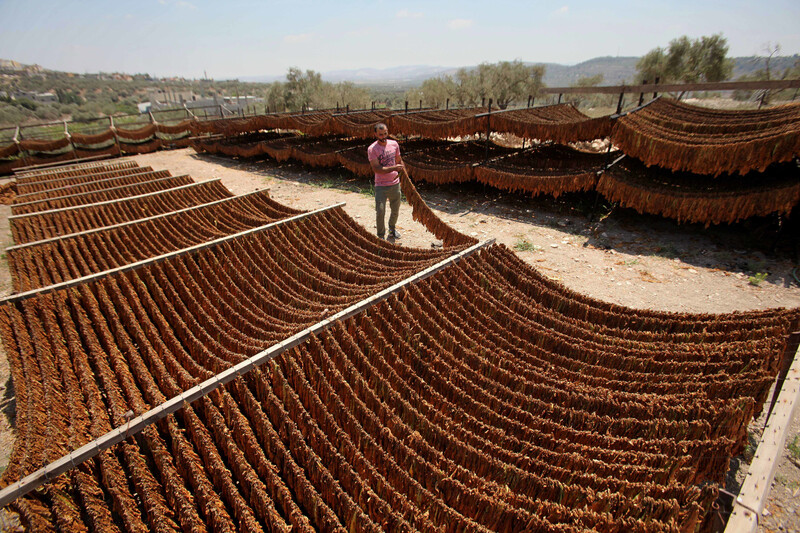
A Palestinian man carries dried tobacco leaves at his field in the West Bank village of Yabad, near Jenin, on 7 August.
APA images
The rubble of a Palestinian family’s home, bearing the logo of the European Union, which funded the structure, after it was destroyed by Israeli forces in the village of Umm al-Kheir near the West Bank city of Hebron on 9 August.
ActiveStills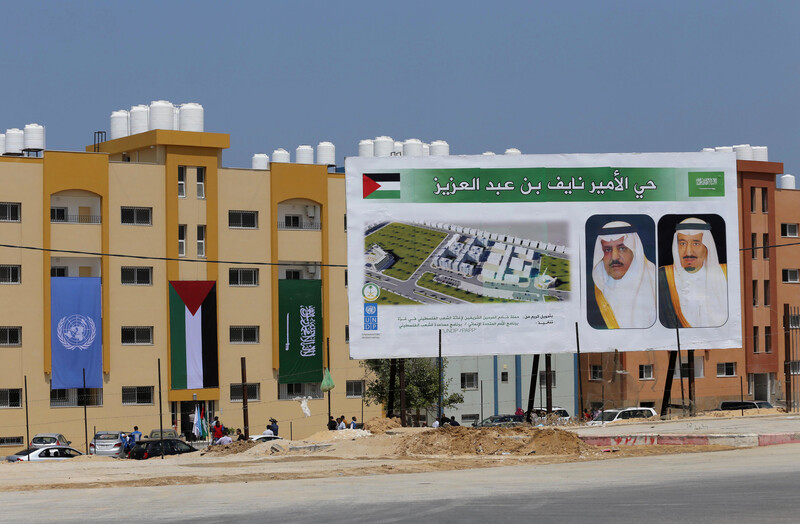
A view of newly built housing units in Beit Lahiya, northern Gaza Strip, on 11 August. Construction of the 40 housing units was financed by the Saudi Fund for Development. The buildings will house Palestinians whose homes were destroyed during Israel’s 51 days of bombing in summer 2014.
APA images
The Palestinian farmer Mustafa Harb examines the damage to his land after it was razed in the early morning of 10 August in Iskaka village, near the West Bank town of Salfit, 11 August. The UN monitoring group OCHA reported that Israeli forces uprooted nearly 300 olive trees owned by Palestinians in Iskaka and Khallet al-Nahla, near Bethlehem, on the grounds that the trees were planted on “state land.”
ActiveStills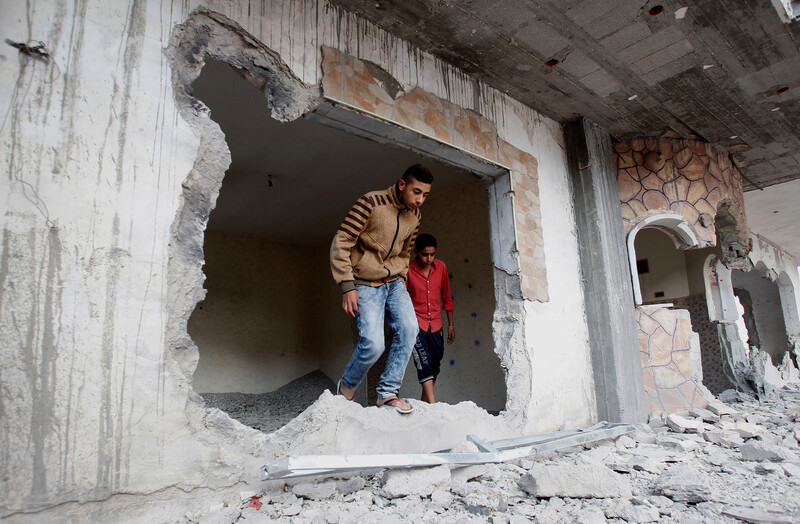
Relatives check the damage to the family house of Palestinian assailant Mohammad Tarayra after it was partially blown up by Israeli troops in the West Bank village of Bani Naim, east of Hebron, 15 August.
APA images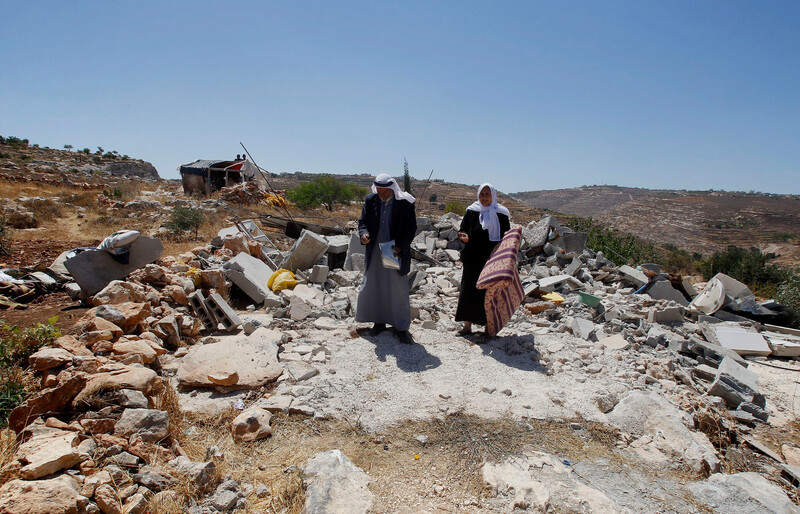
Palestinians stand on the ruins of their home after Israeli troops demolished it in the West Bank village of Sair, near Hebron, on 16 August.
APA images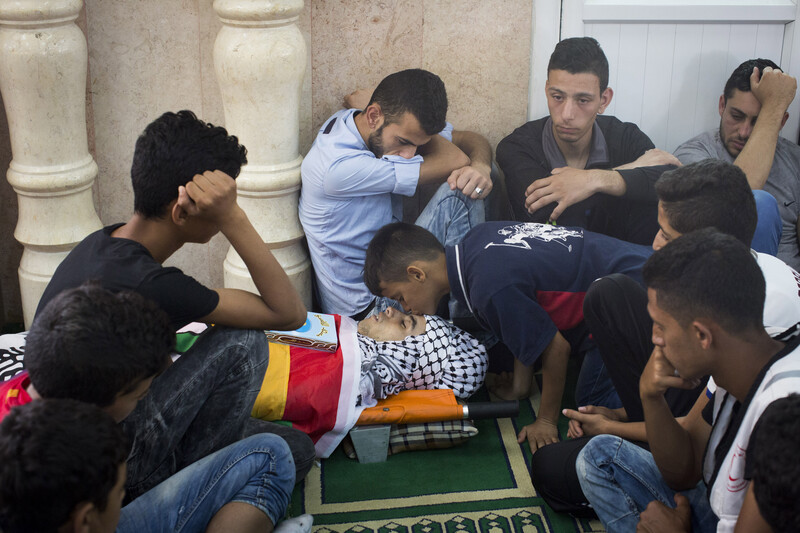
Mourners bid farewell to Muhammad Abu Hashhash, who was shot and killed by raiding Israeli soldiers the previous day, during the 19-year-old’s funeral in Fawwar refugee camp near the West Bank city of Hebron on 17 August.
ActiveStills
A Palestinian protester uses a slingshot to hurl stones towards Israeli soldiers during confrontations following the weekly demonstration against the expropriation of village land in Kufr Qaddum, near the West Bank city of Nablus, on 19 August.
APA images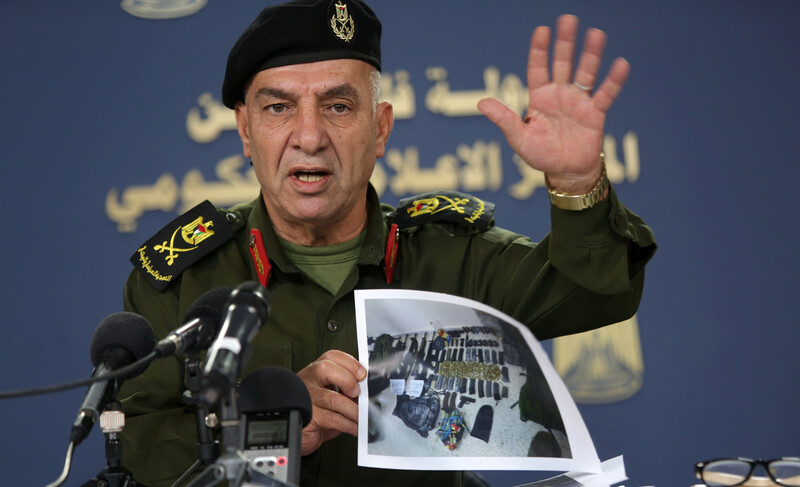
Palestinian Authority security forces spokesperson Adnan Damiri displays a photo of seized weapons during a press conference in the West Bank city of Ramallah on 21 August. Palestinian security forces killed three Palestinians in the West Bank city of Nablus throughout the month as part of what it said was a crackdown on unauthorized weapons. Two security officers were also ambushed and killed in Nablus in August.
APA images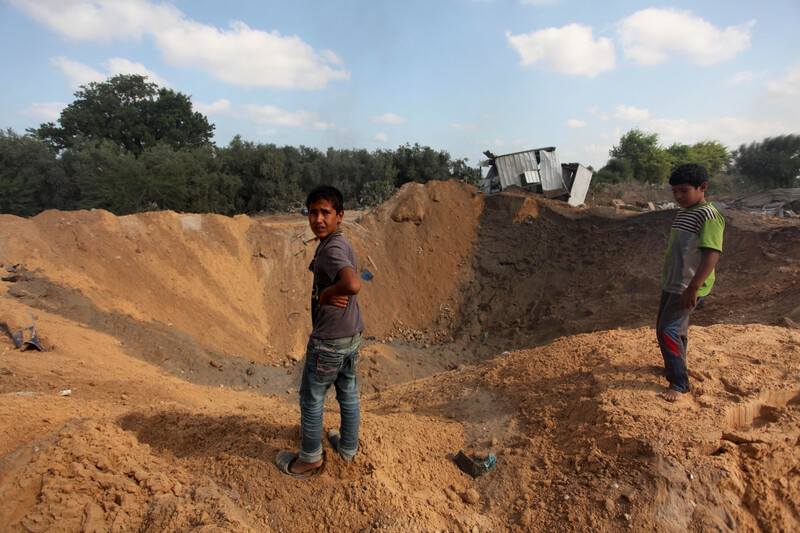
Palestinian children stand next to a crater in Beit Lahiya, northern Gaza Strip, following an Israeli airstrike in response to a rocket fired from Gaza which crashed into the Israeli town of Sderot, 22 August.
APA images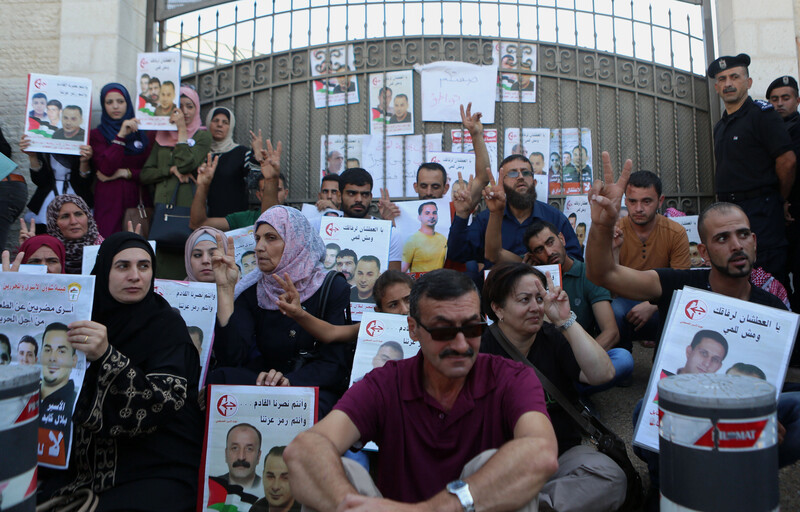
Palestinians hold a sit-in outside a United Nations building in the West Bank city of Ramallah to support Palestinian hunger striker Bilal Kayed, who embarked on several weeks of hunger strike to protest his detention without charge or trial on 22 August. Two days later, Kayed ended his 71-day hunger strike after Israel agreed to release him in December. Israel wanted to exile Kayed from the occupied West Bank for four years, but backed down from that demand, according to the rights group Addameer.
APA images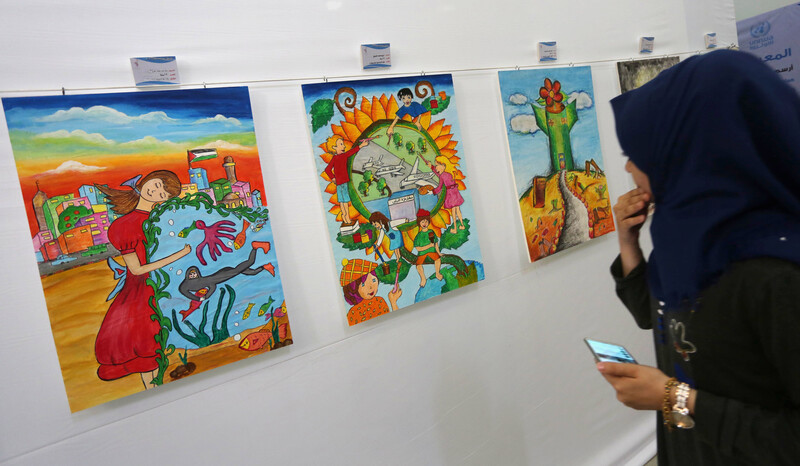
Palestinians attend an exhibition of drawings for the “Draw Your Dream for Gaza 2020” competition organized by UNRWA, the United Nations agency for Palestine refugees, in Gaza City on 23 August. For the contest, students from grades four to six were were asked to draw their dream for Gaza in 2020, by which time the UN warns Gaza will no longer be livable under current conditions.
APA images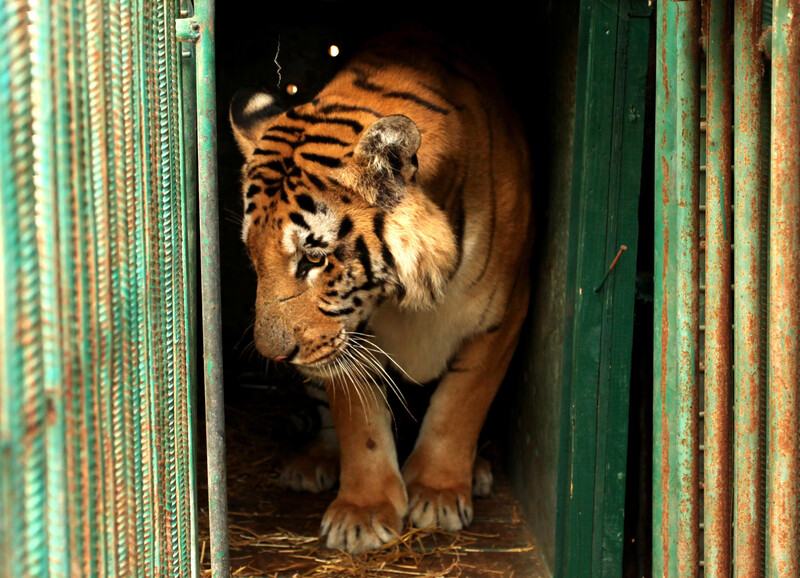
A tiger named Laziz stands in its enclosure before being taken out of Gaza by Four Paws International along with other animals at a zoo in Khan Younis, southern Gaza Strip, on 23 August. Multiple Israeli attacks and nearly a decade of siege proved devastating for the zoo, which opened in 2007. Surviving animals were evacuated from the zoo after its owner said he was no longer able to properly care for them.
APA images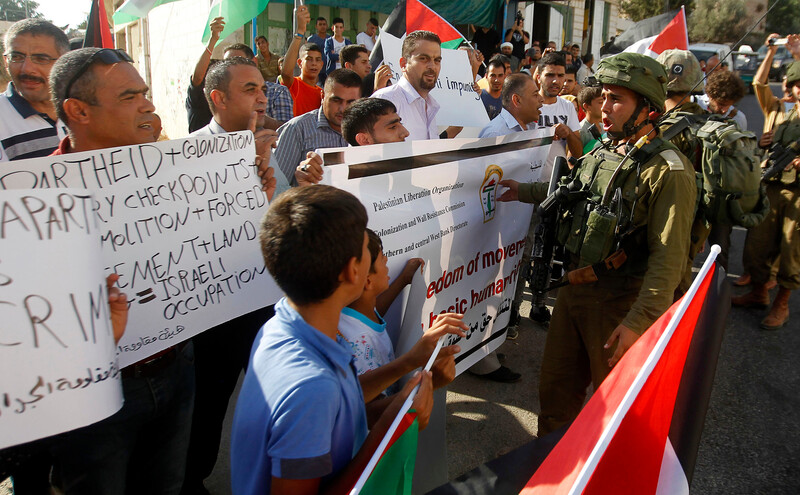
Palestinians call for the opening of Shuhada Street, the former commercial heart of the West Bank city of Hebron, on 24 August. The Israeli army has shuttered and closed Shuhada Street to Palestinians since 1994 after the massacre of 29 Palestinian worshippers inside the Ibrahimi mosque by American Jewish settler Baruch Goldstein that same year.
APA images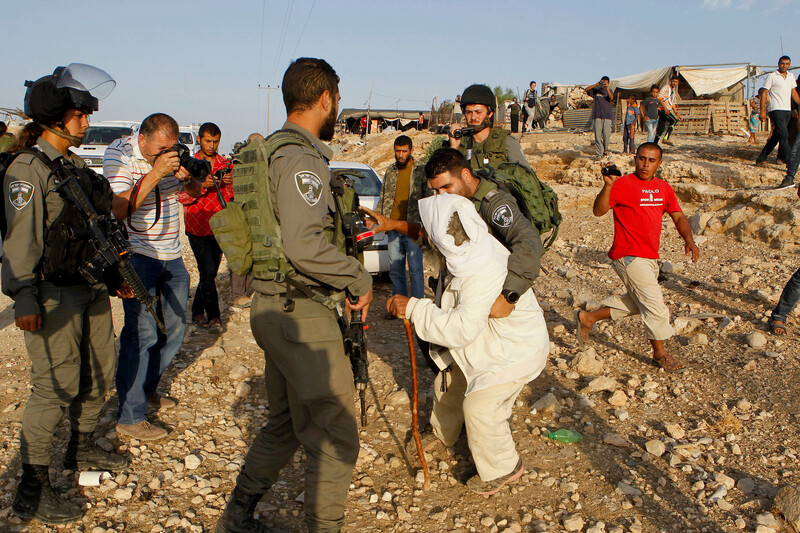
Israeli forces carry away a Palestinian man after his home was demolished near the West Bank village of Umm al-Kheir, near Hebron, on 24 August.
APA images
Mourners carry the body of Iyad Hamad, a 38-year-old father who was shot and killed by Israeli forces near a military post outside the West Bank village of Silwad, near Ramallah, during his funeral on 26 August. The army admitted that Hamad was unarmed and posed no danger when he was slain.
APA images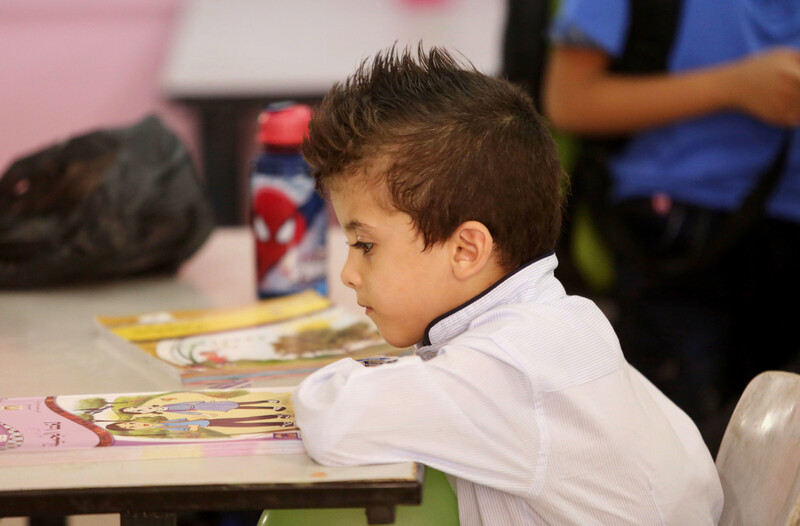
Ahmad Dawabsha, who suffered severe injuries in an arson attack on his family home perpetrated by suspected Jewish attackers, attends class on the first day of the new school year in the West Bank village of Duma, near Nablus, on 28 August. Both of Ahmad’s parents, and his younger brother Ali, died as a result from injuries sustained in the fire.
APA images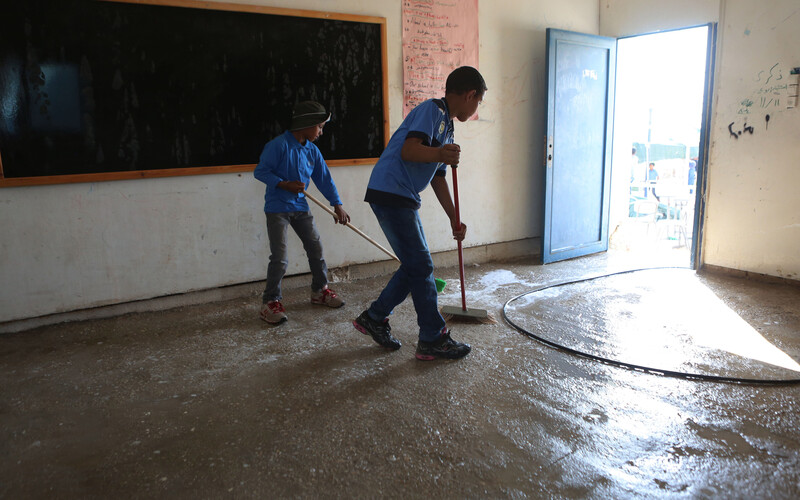
Students clean their classroom at Arab al-Kaabneh school in al-Muarrajat area near the West Bank city of Jericho on 28 August, the first day of the new school year. The school is one of several structures in the Bedouin community built over the objections of the Israeli military occupation authorities, who refused to issue construction permits and threaten to demolish the structures.
APA images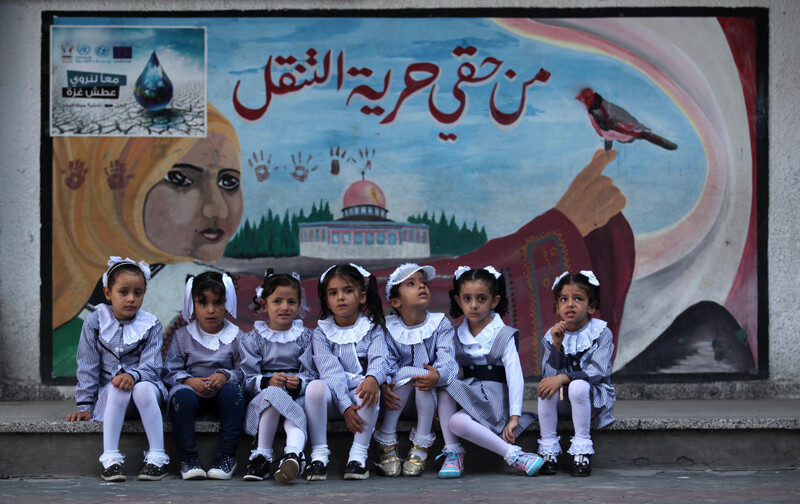
Palestinian girls sit in front of a mural reading “Freedom of movement is my right” on the first day of the new academic year at the United Nations-run school in Khan Younis, southern Gaza Strip, on 28 August.
APA images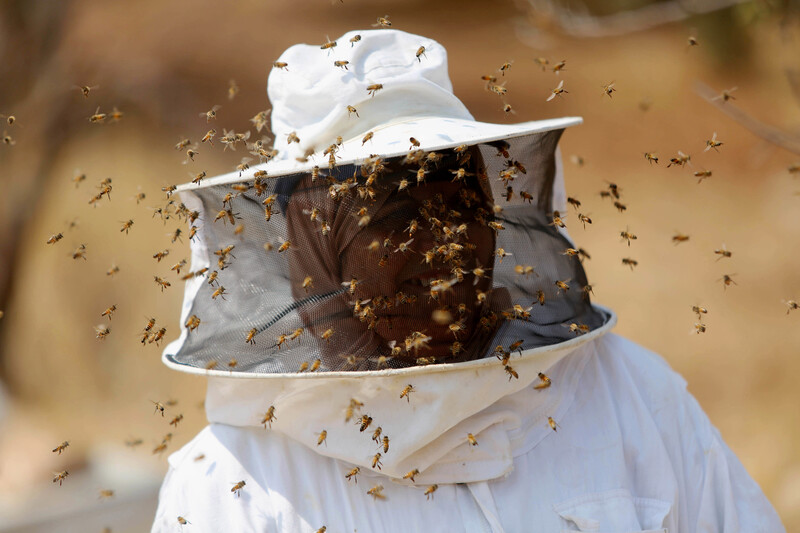
A Palestinian woman harvests honey at a farm in Kafr Malik village, near the West Bank city of Ramallah, on 30 August.
APA images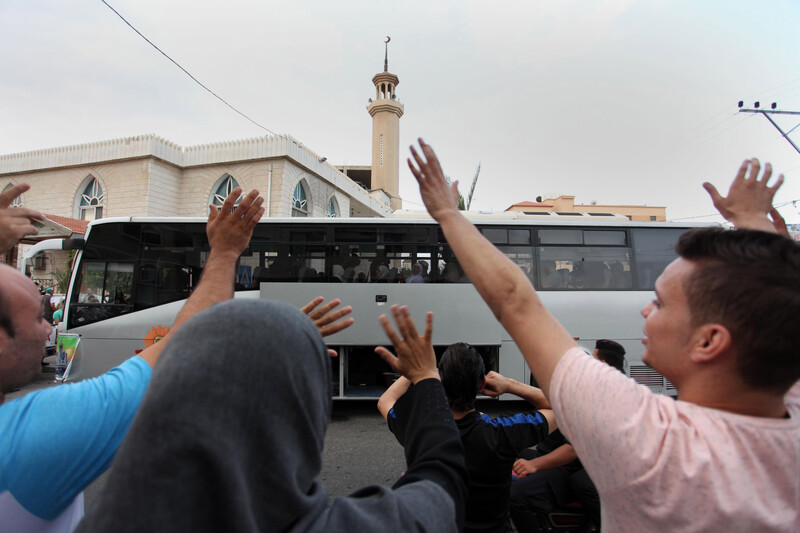
Palestinian pilgrims are seen off by loved ones as they make their way to Mecca for the annual Hajj pilgrimage, Gaza City, 30 August.
APA images

